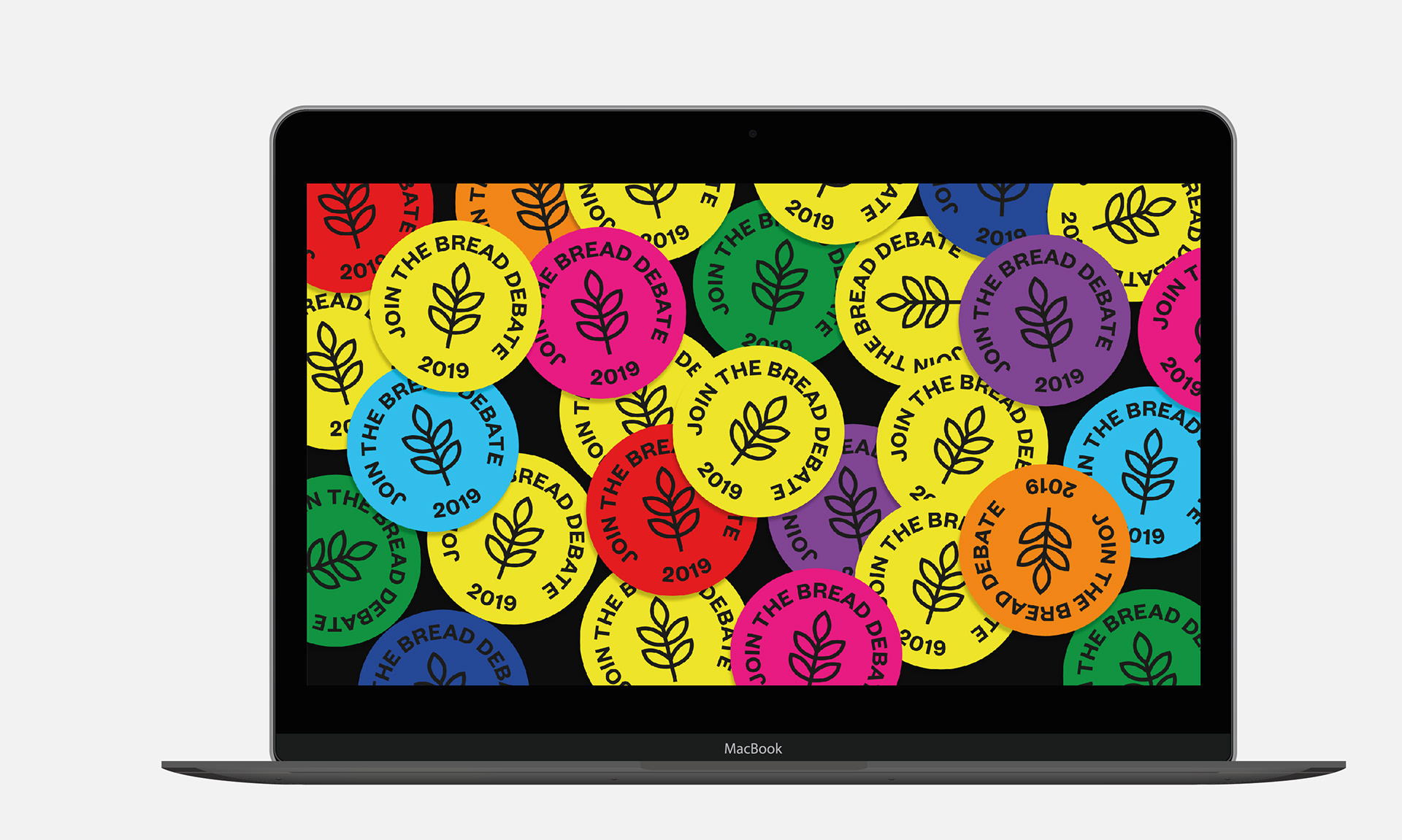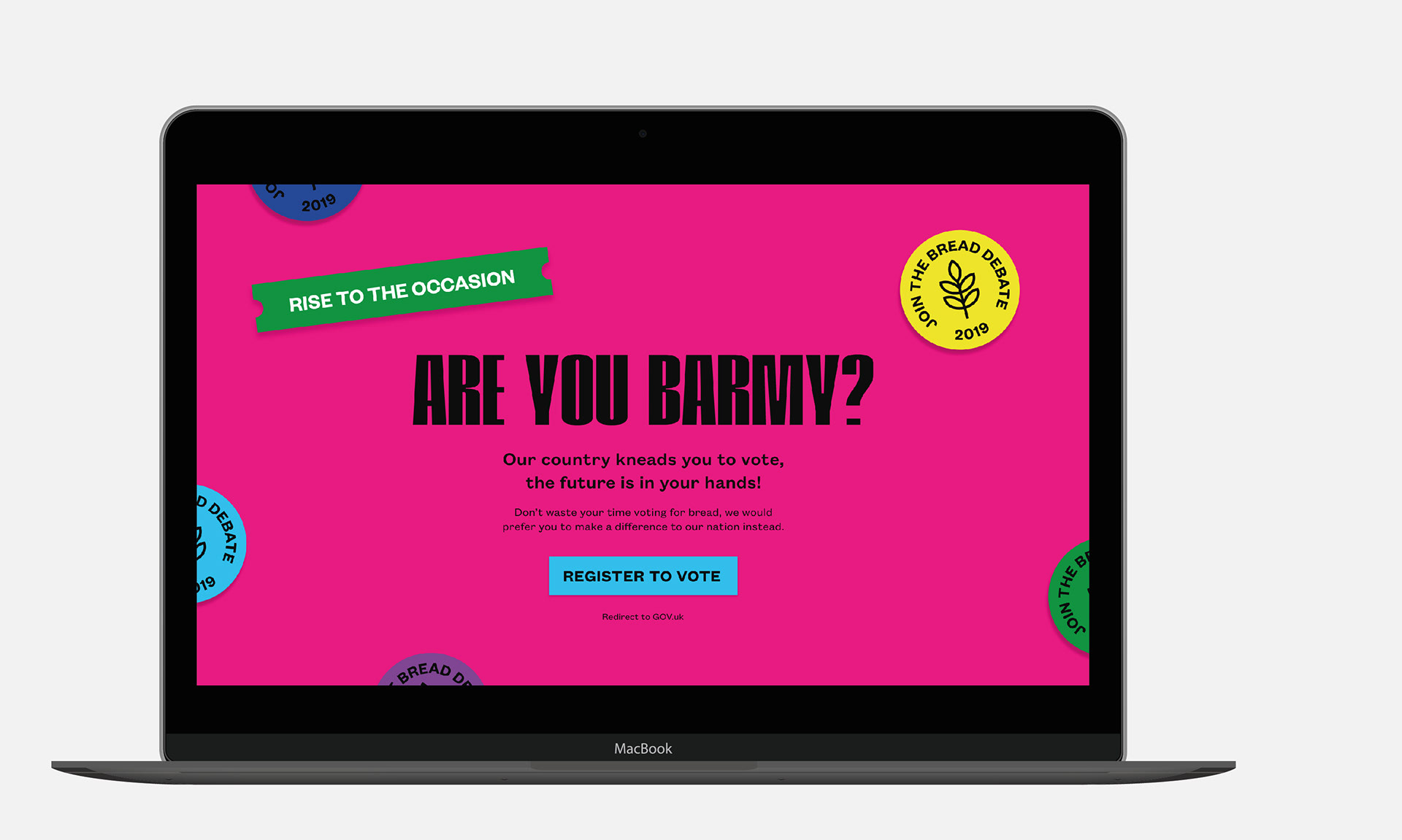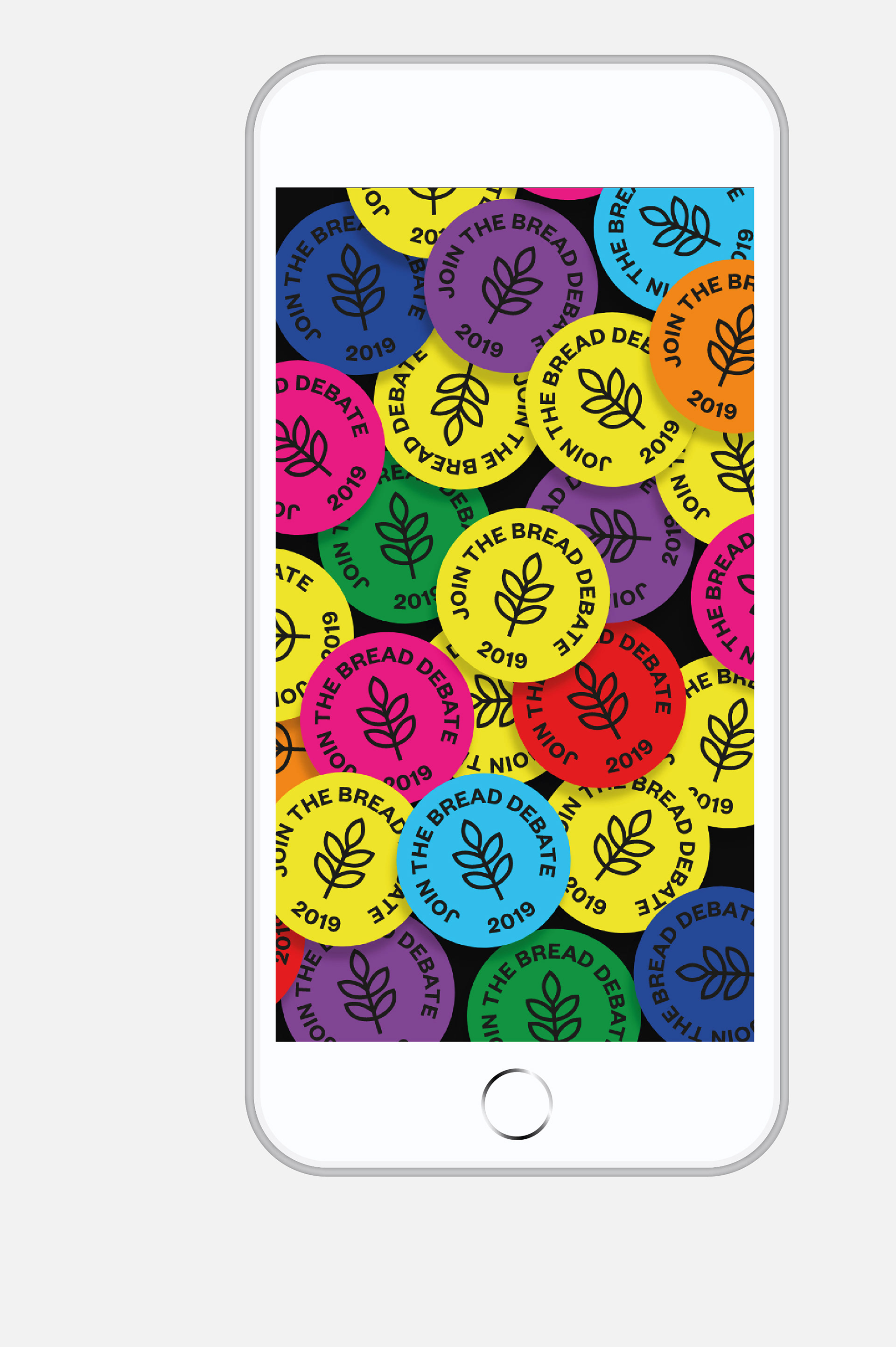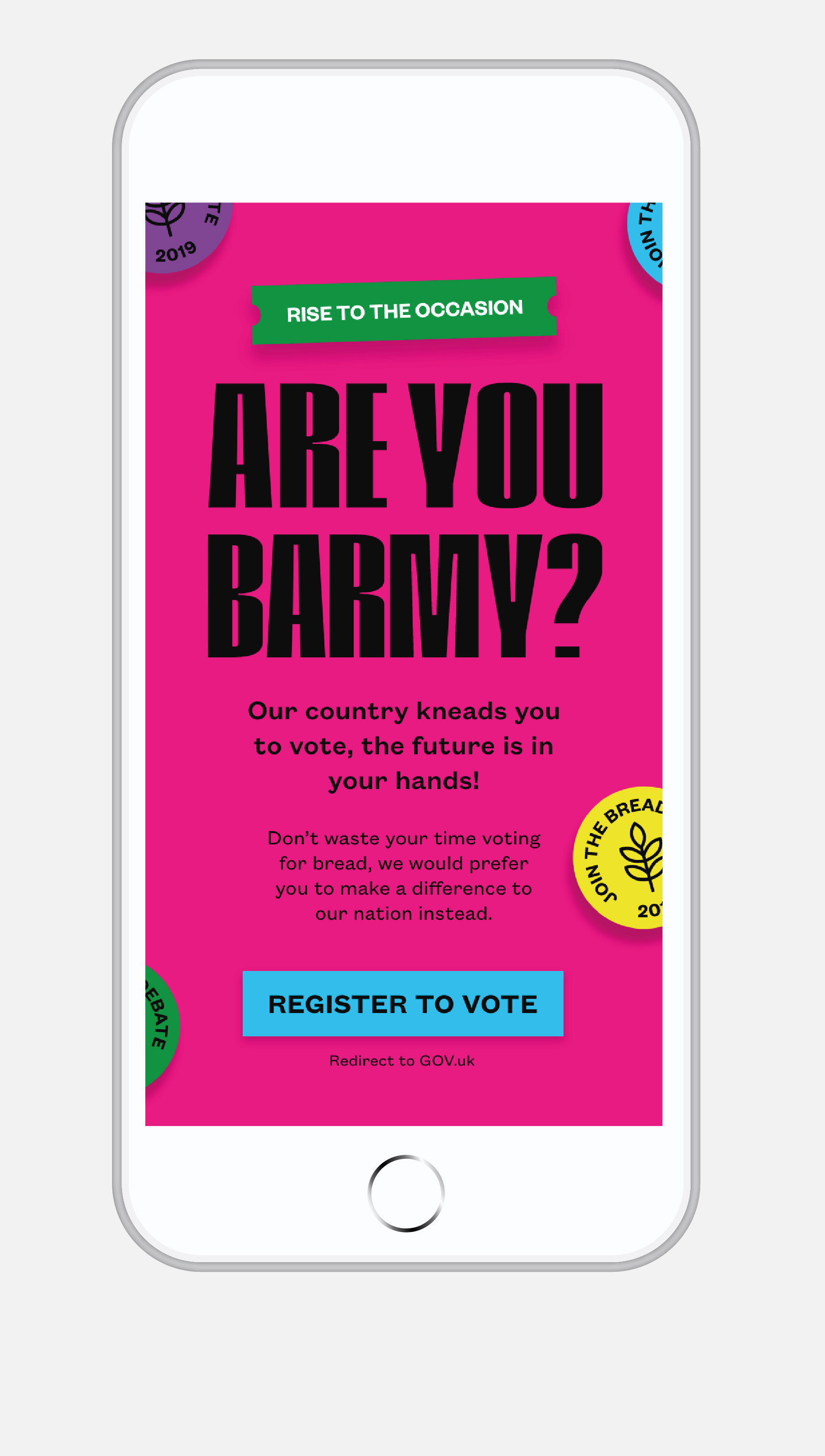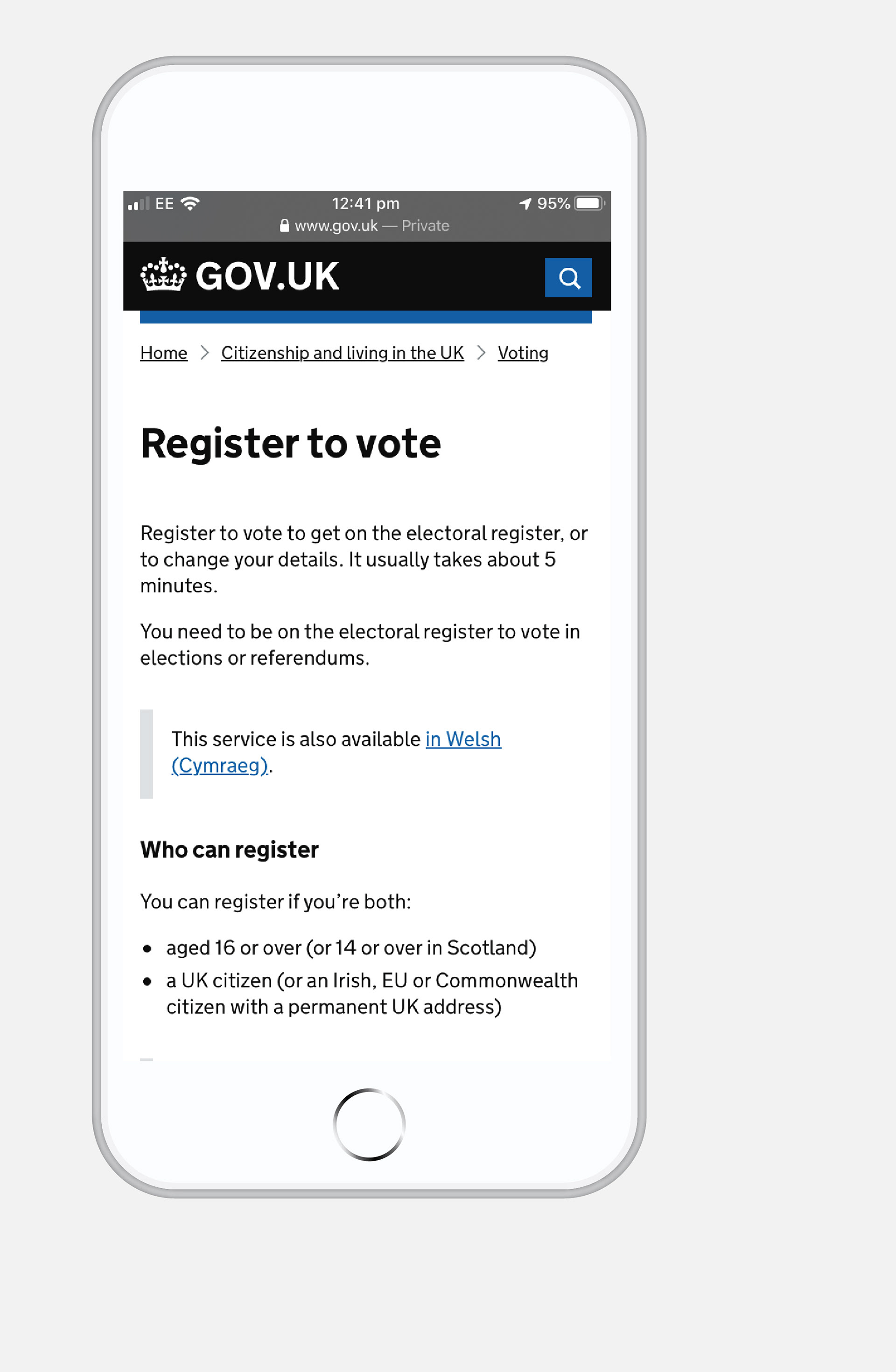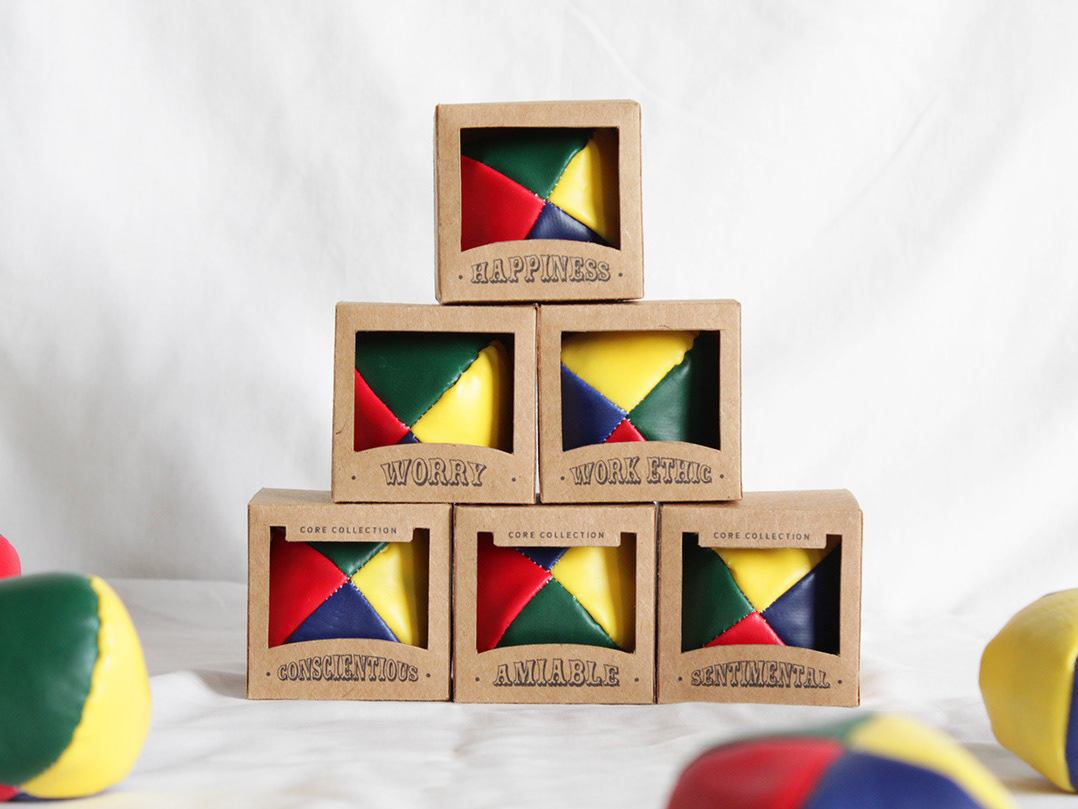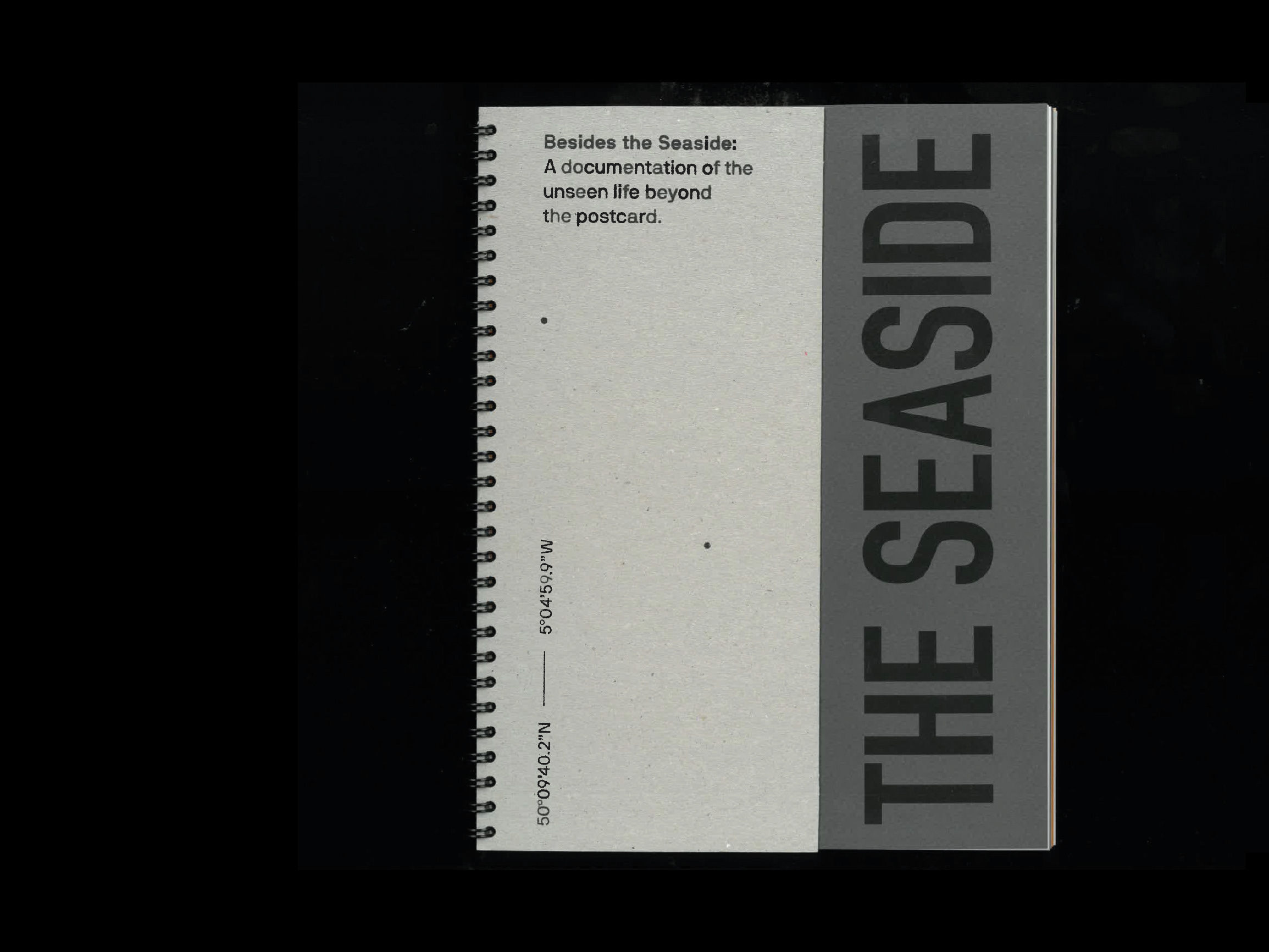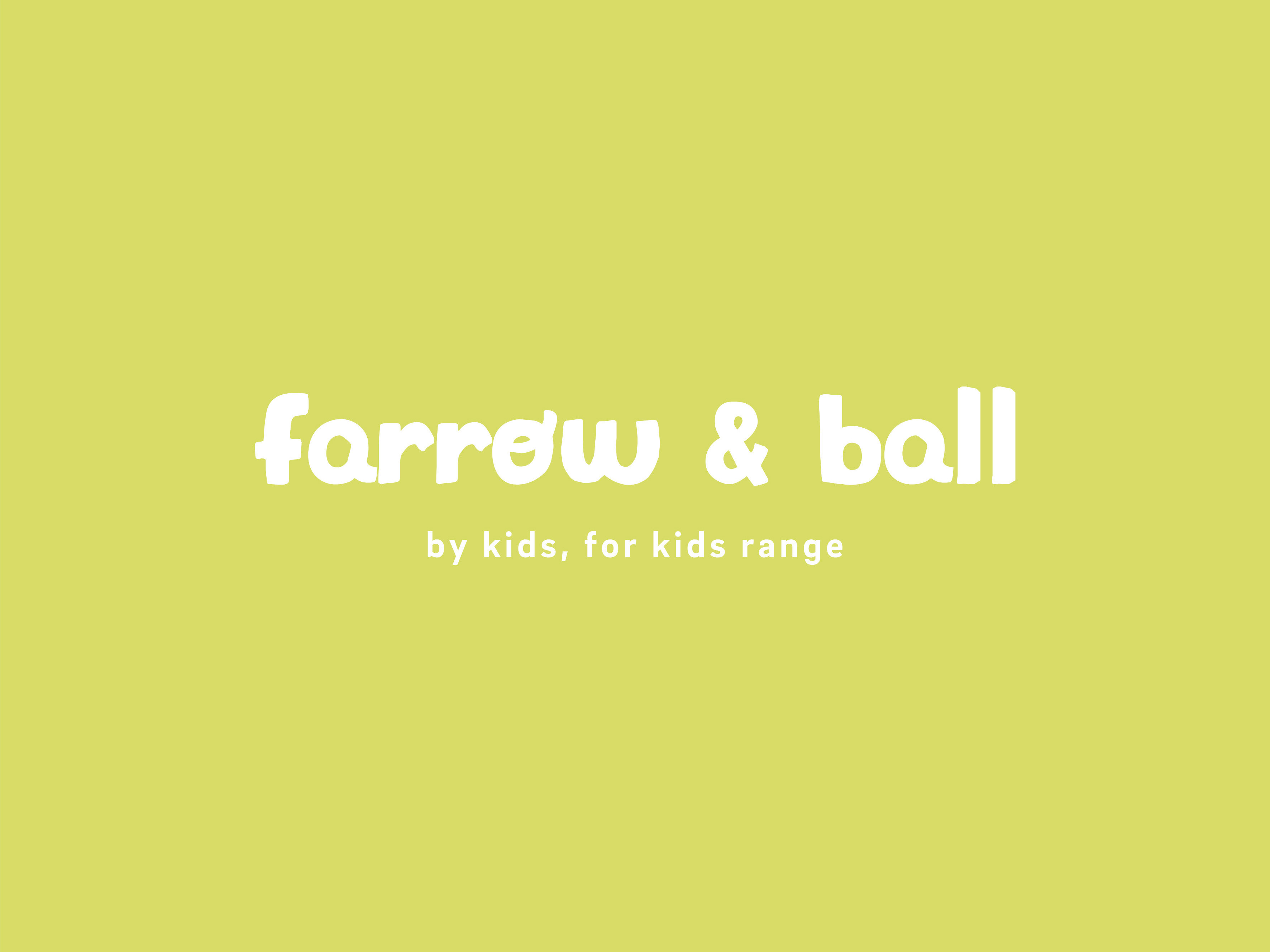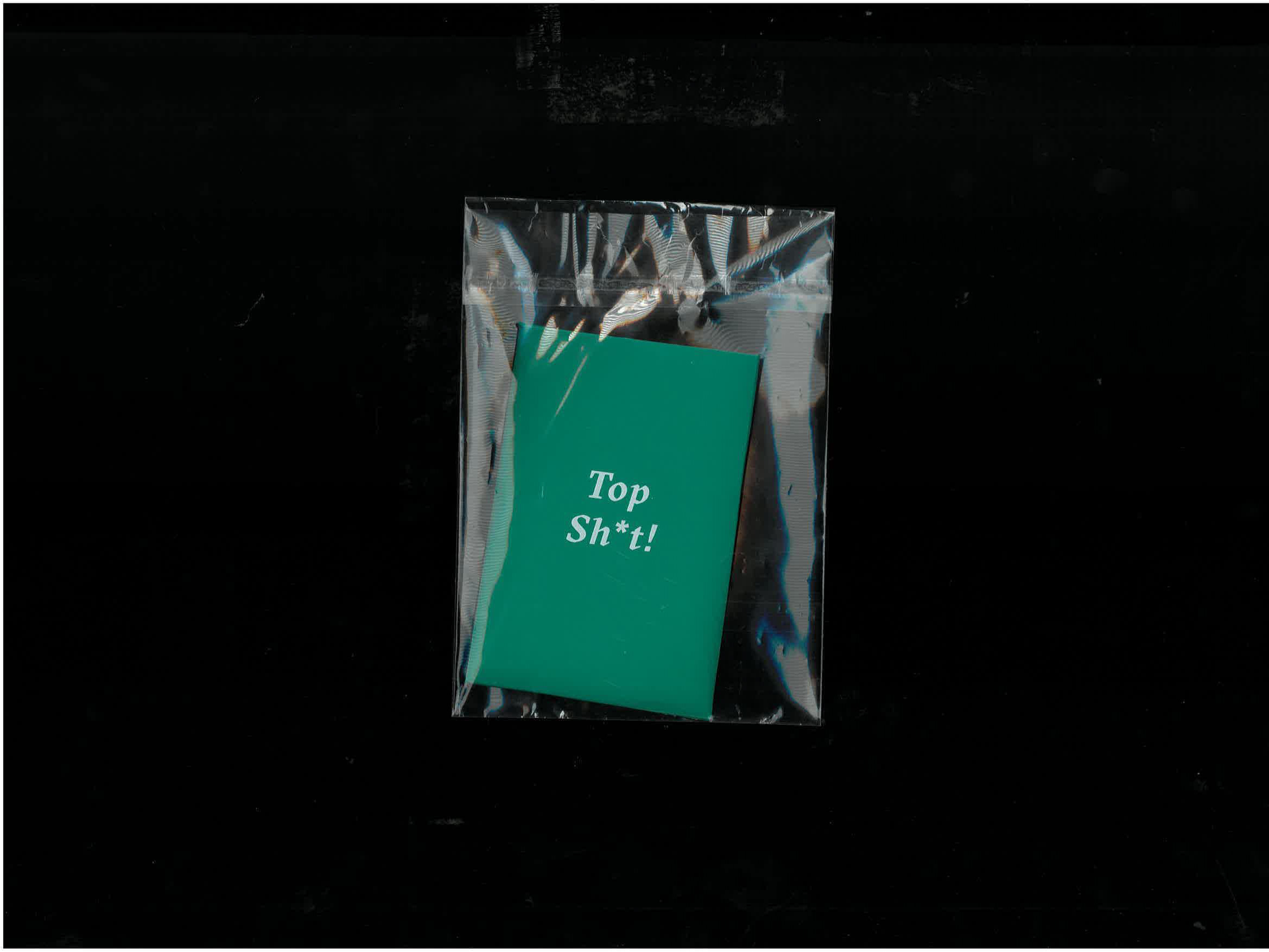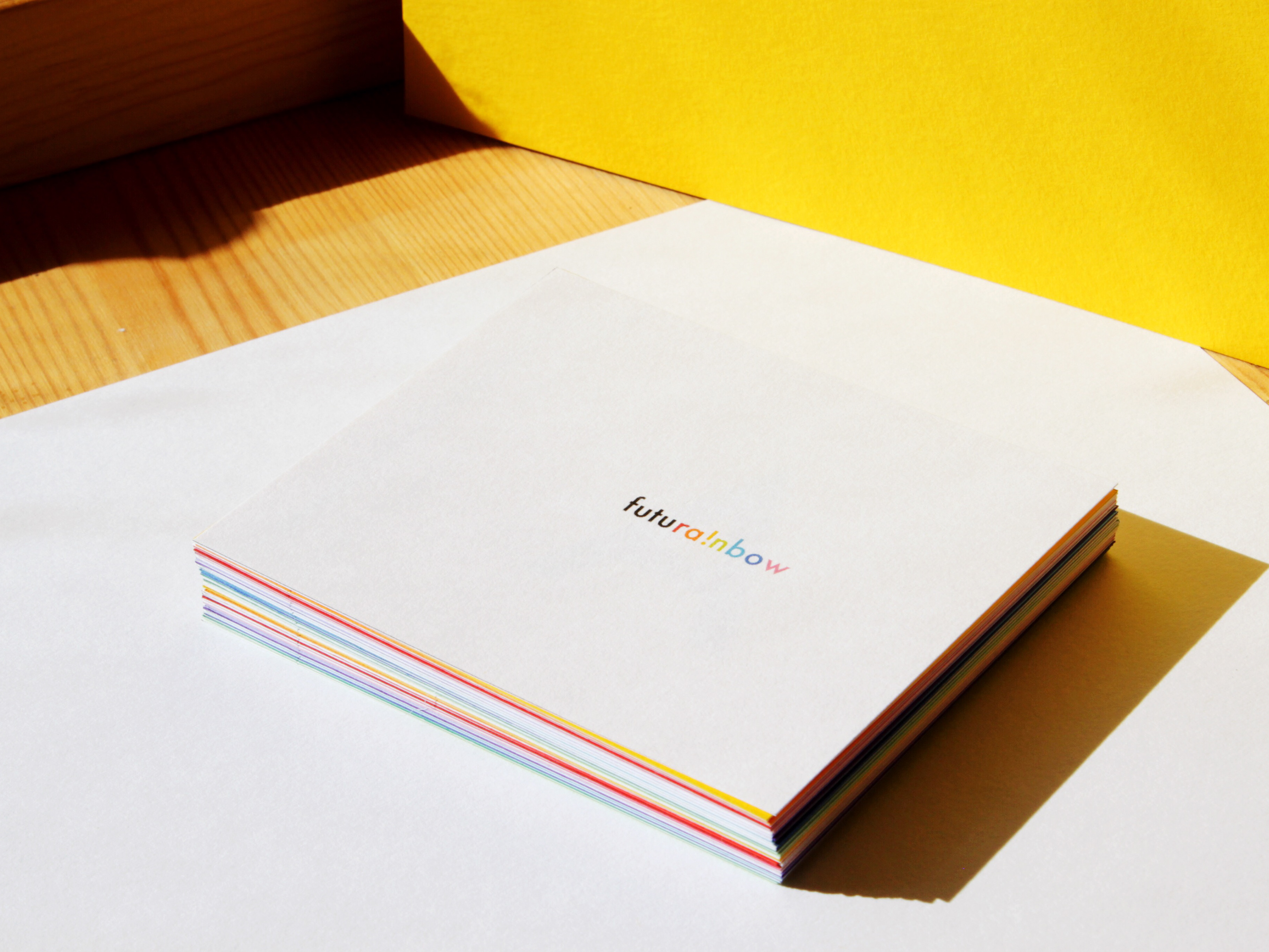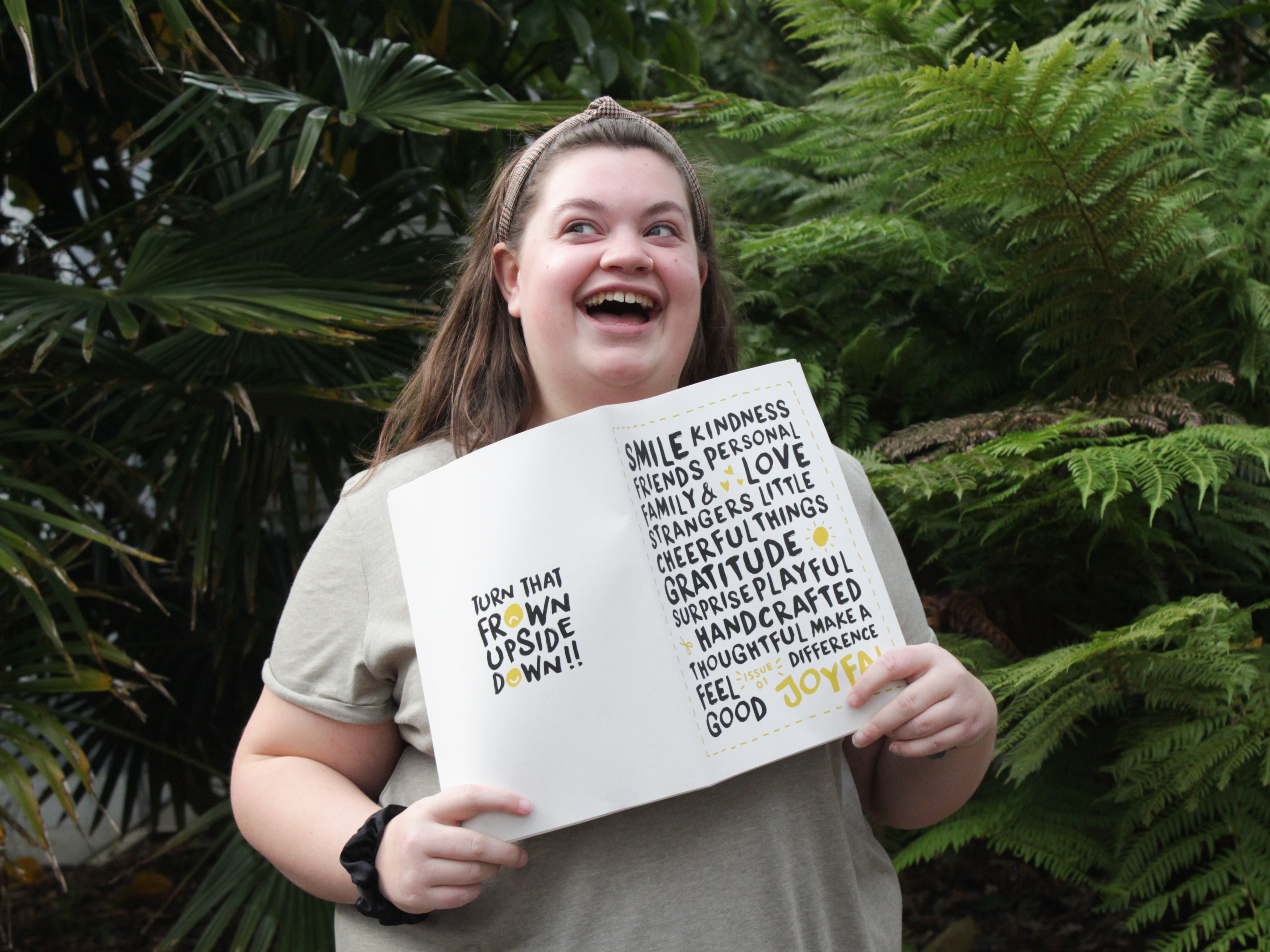Breadxit - Celebrating Regional Dialect
Self Initiated, 2019
Brief
Design a way to celebrate the diversity of our nation through the exploration of regional dialects. Encourage the integration, connection and communication between individuals of similar dialect inheritance and enable people to uncover their own cultural community background.
The result must bring Britain back together, especially during this current period of division. The campaign must encourage involvement and reveal a nationwide passion and a sense of pride of where people come from.
Outcome
Partnered with Warburtons, Breadxit is a campaign inspired by the current affairs of British society, a period of division, stress and worry. By instigating the Great British Bread debate, Breadxit aims to spark passion and pride across the country, in line with possibly one of the most important elections in Britain’s history. Members of the public will be given the opportunity to embrace their regional dialect and feel a sense of belonging amongst others in their local community.
Following research, I noticed the involvement and overall excitement of the general public in response to existing campaigns like Walker’s ‘choose or lose’. These marketing strategies encourage participation due to their humorous, fun and light-hearted nature, but when it calls for making a real difference to the country’s future, people tend to shy away. Therefore, the Breadxit campaign aims to inspire members of the public to engage and become passionate about the ‘bread-debate’, however direct them towards the real debate on our country’s shoulders, encouraging them to register to vote for the real thing.
Branding, UX Design, Promotion and Print
Background
It’s not unheard of for people to argue over whether it’s ‘dinner’ or ‘tea’, or if ‘scone’ rhymes with ‘gone’ or ‘cone’, in fact it is a very British thing for us to discuss. According to Anglophonism, an online blog focussed on the system of the English Language, “dialects are a wonderful thing...they give us a sense of belonging to a community, or if you’ve moved away from home, they make you stand out, attaching themselves to a sense of individuality”. Together, we need to celebrate language, past and present, and bring regional dialect, full of heritage, back into communities where they truly belong.
In today’s digitally saturated society, there is a huge appetite to preserve an understanding of dialect. According to Alan Brown, reporter in About Manchester, “Britons dialects and regional vocabularies are at risk of extinction due to increased social contact”. As the world has become more connected due to social networking sites and online influential figures, individuals increasingly share the same vocabulary.
Negatively, a research completed by academics from the University of Manchester and Bath uncovered that “broad regional accents can be a barrier to social mobility, as they are less favoured by some people”, another factor as to why regional dialects may become a distant memory. Now more than ever, in a period of division, is the right time to come together with our fellow citizens and celebrate our diversity, be more inclusive and make an extra effort to understand one another.
Are regional dialects going to become a thing of the past? How long will it take for regional dialects to die out completely, or has this process already begun? If so, we need to spark the change in our local communities, to bind our country together again and embrace the diversities our small island nation holds, as there is something magical that exists in the colloquial language.
(above left) Mezzodetto by Lorenzo Ballarini
(above right) Be On The Right Side of History by Anjela Freyja on Behance
Visual Reference
Found imagery is showcased above/below to provide visual reference for the graphic style of the campaign. The visual identity focusses on “making a statement” by incorporating copy which is straight to the point partnered with bold colours and variable typefaces, with interchangeable weights and heights, to capture the eye of the audience, encouraging further involvement.
Other design assets for the campaign are hugely inspired by political material, such as party posters, badges and representative rosettes, as shown. The simple choice of typefaces, colour schemes and graphic language have also influenced the visuals for the campaign.
Brand Guidelines
Visual Identity
Main logo & marks
As mentioned, the visual identity for this campaign has been inspired by the current election campaigns and political material. I have used comedic and witty copy as the main focus of this project to courage nationwide involvement and to add excitement to the typically dry visuals.
The logo has been designed to resemble the Brexit campaign, with the use of a very simple, utilitarian typeface. The arc motif has taken inspiration from Warburton’s signature arced detail seen in their logo. The partnering campaign mark resembles a political badge, which one would usually wear in support of their chosen party. These badges/stickers will be applied to the brand experience, indicating a sense of attitude, being positioned over the top of visuals purposefully, suggesting action and rebellion.
Promotional material
Poster Series
The poster series has been designed to mirror political party candidate posters which individuals place in their windows as a sign of solidarity and to encourage others to vote for their chosen party.
The different names for the ‘soft round bread’ have been positioned and showcased as if they are political party leaders. The style of copy used is playful and witty, using play on words with both election call to actions and bread terminology, e.g. We can get the job bun (done).
The posters aim to get individuals involved with the campaign, possibly spreading the word. Little do they know where the website directs them too.
Packaging Stickers
In addition to posters, stickers will be placed on the packaging of popular supermarket bread brands as a sign of taking action and rebellion. The stickers have been specifically positioned on the packaging of ‘soft white bread’, as this is the main focus of the debate.
The stickers cause intrigue and encourage the individual to get involved. Due the paper’s technology, users are able to scan the stickers with their phone, granting them access to the campaign’s website, in hope of voting for the ‘correct terminology’.
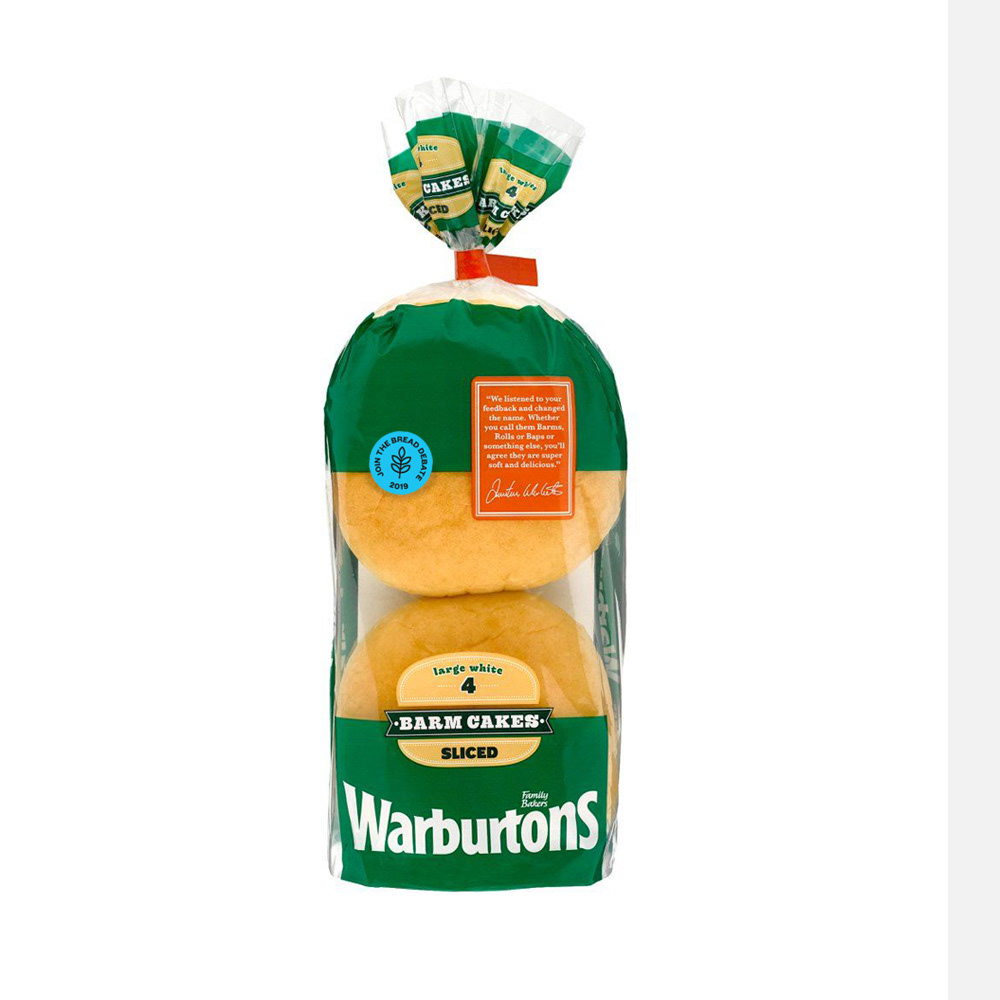

Nationwide Lorries
Warburton’s Breadxit Campaign lorries will be travelling on the UK’s most popular motorways to encourage individuals to get involved. The lorries will prompt individuals to take photographs and consequently post on social media, further spreading the word. The design of the lorries mirrors the appearance of the poster series whilst also, from the rear, resembling the ‘soft round bread’ packaging, as if the lorry is one large pack.
Website
User experience
The user’s experience finally concludes at the campaign’s website. The one-page website aims to inform the user of the importance of registering to vote and consequently voting for the real election, as opposed to a fictional, comedic alternative.
The website initially greets users with a screen filled with scattered badges, asking users reveal the campaign’s main message and overarching aim. The ‘Are you barmy?’ headline copy hints at the northern bread name, whilst also suggesting to the user that they were incorrectly using their time, as they could be participating in a much more serious debate. The website concludes by offering a link which directs the user to the GOV.uk website, where they are able to register to vote.
